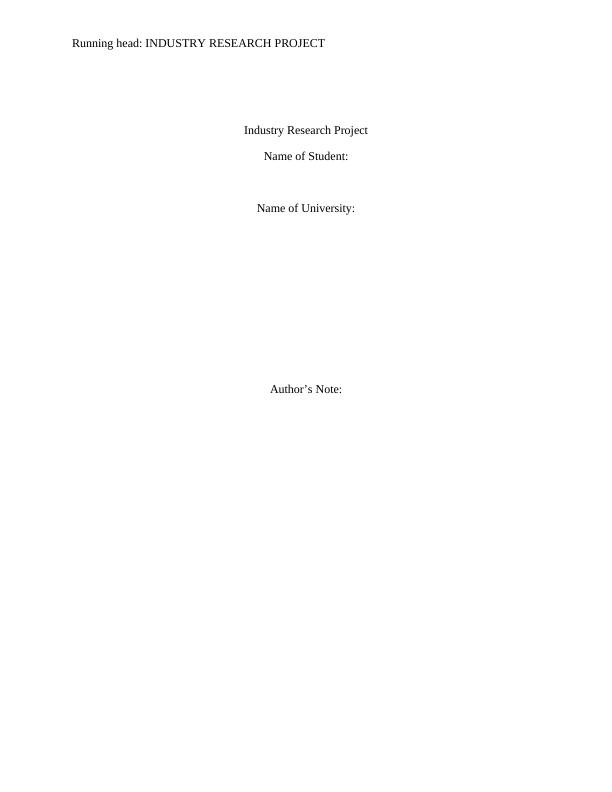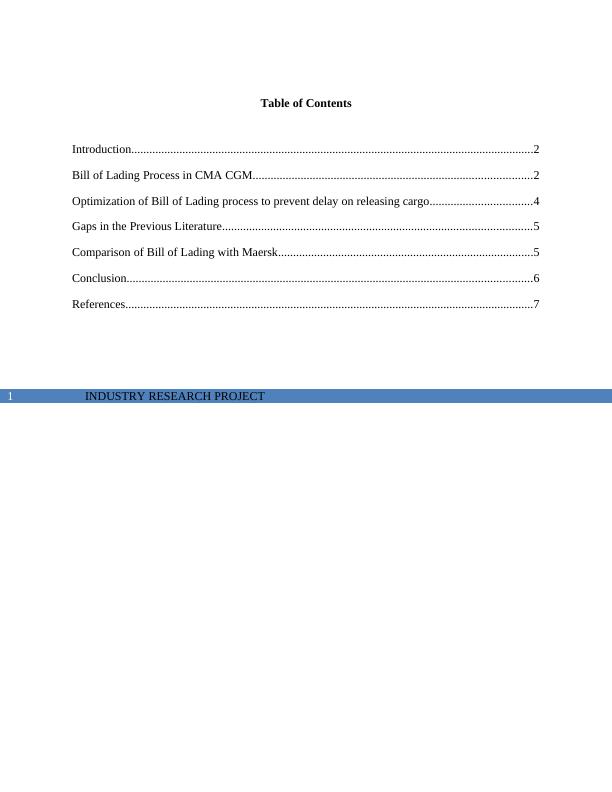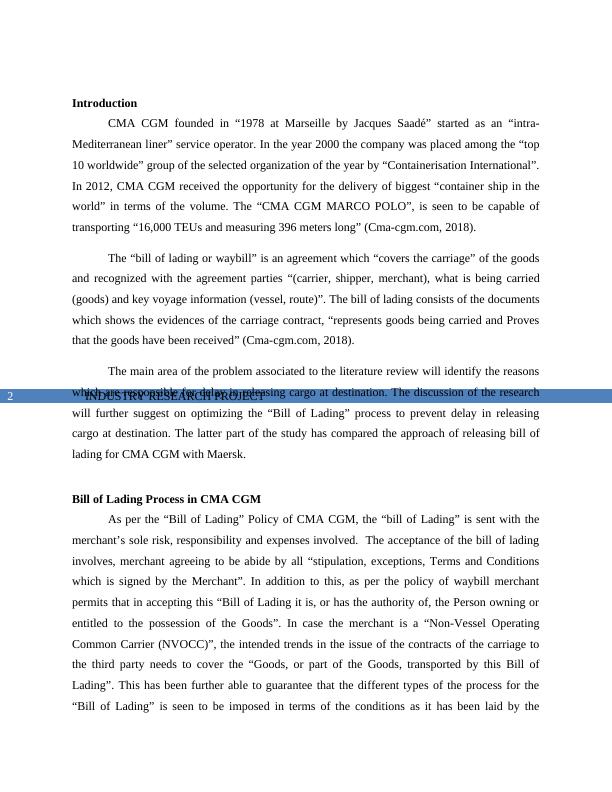Ask a question from expert
Industry Research Project - Desklib
10 Pages2958 Words122 Views
Added on 2021-04-21
Industry Research Project - Desklib
Added on 2021-04-21
BookmarkShareRelated Documents
Running head: INDUSTRY RESEARCH PROJECTIndustry Research Project Name of Student:Name of University:Author’s Note:

INDUSTRY RESEARCH PROJECT1Table of ContentsIntroduction......................................................................................................................................2Bill of Lading Process in CMA CGM.............................................................................................2Optimization of Bill of Lading process to prevent delay on releasing cargo..................................4Gaps in the Previous Literature.......................................................................................................5Comparison of Bill of Lading with Maersk.....................................................................................5Conclusion.......................................................................................................................................6References........................................................................................................................................7

INDUSTRY RESEARCH PROJECT2IntroductionCMA CGM founded in “1978 at Marseille by Jacques Saadé” started as an “intra-Mediterranean liner” service operator. In the year 2000 the company was placed among the “top10 worldwide” group of the selected organization of the year by “Containerisation International”.In 2012, CMA CGM received the opportunity for the delivery of biggest “container ship in theworld” in terms of the volume. The “CMA CGM MARCO POLO”, is seen to be capable oftransporting “16,000 TEUs and measuring 396 meters long” (Cma-cgm.com, 2018).The “bill of lading or waybill” is an agreement which “covers the carriage” of the goodsand recognized with the agreement parties “(carrier, shipper, merchant), what is being carried(goods) and key voyage information (vessel, route)”. The bill of lading consists of the documentswhich shows the evidences of the carriage contract, “represents goods being carried and Provesthat the goods have been received” (Cma-cgm.com, 2018).The main area of the problem associated to the literature review will identify the reasonswhich are responsible for delay in releasing cargo at destination. The discussion of the researchwill further suggest on optimizing the “Bill of Lading” process to prevent delay in releasingcargo at destination. The latter part of the study has compared the approach of releasing bill oflading for CMA CGM with Maersk.Bill of Lading Process in CMA CGMAs per the “Bill of Lading” Policy of CMA CGM, the “bill of Lading” is sent with themerchant’s sole risk, responsibility and expenses involved. The acceptance of the bill of ladinginvolves, merchant agreeing to be abide by all “stipulation, exceptions, Terms and Conditionswhich is signed by the Merchant”. In addition to this, as per the policy of waybill merchantpermits that in accepting this “Bill of Lading it is, or has the authority of, the Person owning orentitled to the possession of the Goods”. In case the merchant is a “Non-Vessel OperatingCommon Carrier (NVOCC)”, the intended trends in the issue of the contracts of the carriage tothe third party needs to cover the “Goods, or part of the Goods, transported by this Bill ofLading”. This has been further able to guarantee that the different types of the process for the“Bill of Lading” is seen to be imposed in terms of the conditions as it has been laid by the

End of preview
Want to access all the pages? Upload your documents or become a member.
Related Documents
(PDF) Optimization of Web-based Bill of Lading Documentlg...
|20
|6440
|41
Shipper-Carrier Obligations- International Laws and Agreementlg...
|8
|2231
|30
Introduction to Maritime Law (pdf)lg...
|8
|2518
|449
A Simple Guide To Understanding Incotermslg...
|4
|734
|14